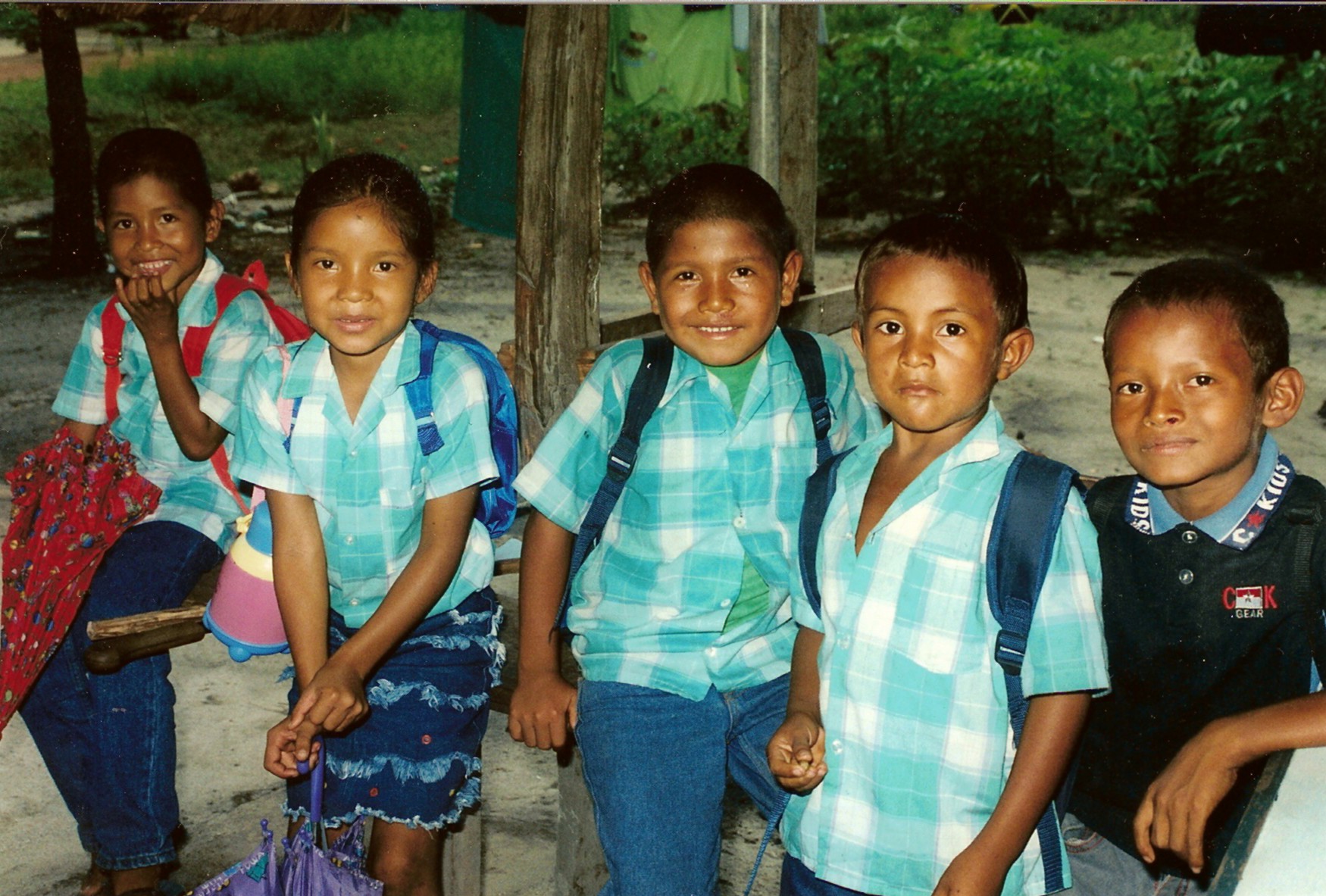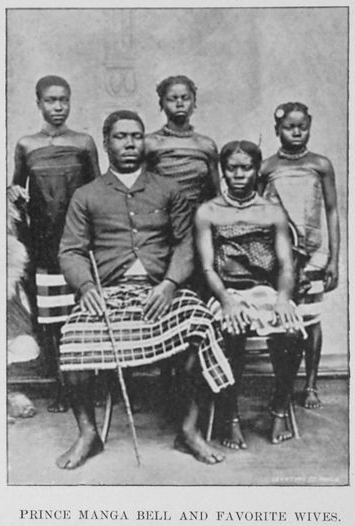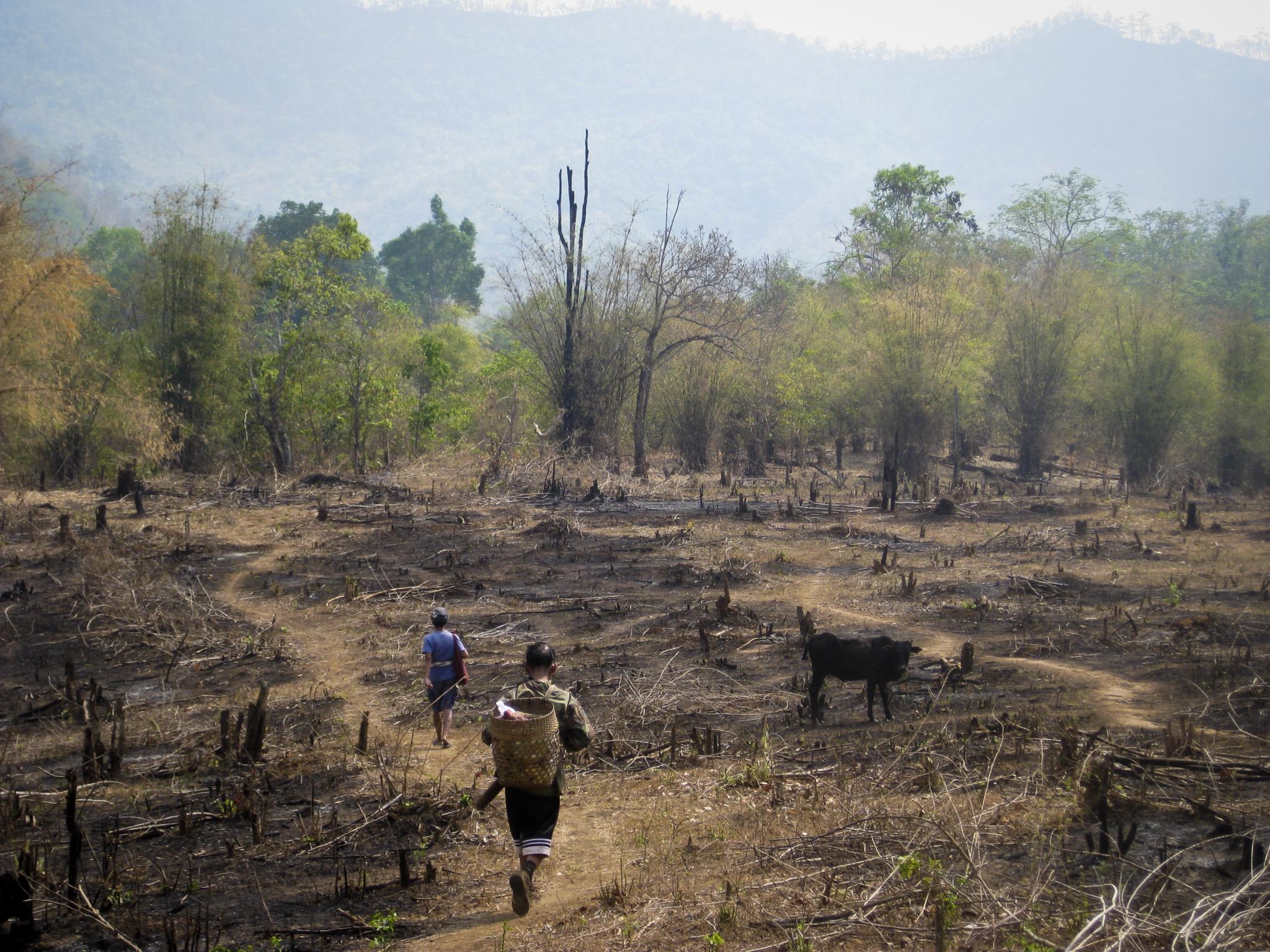|
Teko People
The Teko (also called Emerillon, Emerilon, Emerion, Mereo, Melejo, Mereyo, Teco) are a Tupi–Guarani-speaking people in French Guiana living on the banks of the Camopi and Tampok rivers. Their subsistence is based on horticulture, hunting and various fishing techniques. As of 2010 they numbered about 410 individuals. History The Teko constitute one of the six now-living ethnic groups of French Guiana already present before colonization. More nomadic than the other ethnic groups of the area, the Teko resided on different rivers in French Guiana during the colonial period, notably on the Approuague and, more recently, they settled within the surroundings of the rivers Tampok and Maroni near the border with Suriname, and the river Camopi near the border with Brazil. Their villages, usually located at a distance from the rivers for protection from raids, were moved frequently due to soil exhaustion, warfare, and several customary reasons, like the death of a chief. The Teko's ... [...More Info...] [...Related Items...] OR: [Wikipedia] [Google] [Baidu] |
Camopi
Camopi (; ) is a commune of French Guiana, an overseas region and department of France located in South America. Camopi is mainly inhabited by Amerindians of the Wayampi and Teko tribes. History In 1738, a Jesuit mission opened on the river Oyapock near the current town of Camopi. The missionaries brought European diseases and caused a depopulation. In 1763, the Jesuits left and most of the population dispersed. During the 18th and 19th century, the Teko had moved into the area which had been home to the Wayampi, and by the 1830s, their territories overlap, however the tribes remained isolated. In 1930s, France and Brazil renewed their interest in the area, and wanted to establish borders. Medical facilities were established in the mid-1950s followed by a school. In the 1960s attempts were made to group the population into bigger villages with limited success. A granman (paramount chief) was installed according to the Maroon hierarchy, but failed to catch on. In 1969, ... [...More Info...] [...Related Items...] OR: [Wikipedia] [Google] [Baidu] |
Kalina People
The Kalina, also known as the Caribs or mainland Caribs and by several other names, are an Indigenous people native to the northern coastal areas of South America. Today, the Kalina live largely in villages on the rivers and coasts of Venezuela, Guyana, Suriname, French Guiana, and Brazil. They speak a Cariban language known as Carib. They may be related to the Island Caribs of the Caribbean, though their languages are unrelated. Name The exonym ''Caribe'' was first recorded by Christopher Columbus. One hypothesis for the origin of ''Carib'' is that it means "brave warrior". Its variants, including the English ''Carib'', were then adopted by other European languages. Early Spanish colonizers used the terms '' Arawak'' and ''Caribs'' to distinguish the peoples of the Caribbean, with ''Carib'' reserved for Indigenous groups that they considered hostile and ''Arawak'' for groups that they considered friendly. The Kalina call themselves ''Kalina'' or ''Karìna'' , spelled vario ... [...More Info...] [...Related Items...] OR: [Wikipedia] [Google] [Baidu] |
Antécume-Pata
Antécume-Pata is a village in French Guiana, France. It was founded by André Cognat, a Pierre-Bénite-born Wayana tribal chief. It is home to a nursery and primary state school. Even though French is taught at the school, Sranan Tongo is still the ''lingua franca A lingua franca (; ; for plurals see ), also known as a bridge language, common language, trade language, auxiliary language, link language or language of wider communication (LWC), is a Natural language, language systematically used to make co ...'' (common language) in the region. Geography Antécume-Pata lies about up the Lawa River from the village of Kumakahpan and down the Lawa River from the village of Palasisi. Notes References * Indigenous villages in French Guiana Maripasoula Villages in French Guiana Islands of French Guiana {{France-geo-stub ... [...More Info...] [...Related Items...] OR: [Wikipedia] [Google] [Baidu] |
Wayampi Language
Wayãpi or Wayampi (Waiãpi, Guayapi, Oiampí) is a Tupi–Guarani language spoken by the Wayãpi people. It is spoken in French Guiana and Brazil. Phonology Consonants Vowels In closed syllables, /e, o/ are heard as Orthography Wayãpi is spelt phonetically based on the International Phonetic Alphabet, and not according the French orthography. The spelling uses the letter ɨ for the close central unrounded vowel between i and u. E is always pronounced é, vowels with a tilde are always nasal (ã, ẽ, ĩ, õ, ũ), ö is like the German O umlaut, and b is pronounced mb. All letters are pronounced. References Bibliography * * External linksWayampi(Intercontinental Dictionary Series The Intercontinental Dictionary Series (commonly abbreviated as IDS) is a large database of topical vocabulary lists in various world languages. The general editor of the database is Bernard Comrie of the Max Planck Institute for Evolutionary An ...) Tupi–Guarani langu ... [...More Info...] [...Related Items...] OR: [Wikipedia] [Google] [Baidu] |
Portuguese Language
Portuguese ( or ) is a Western Romance language of the Indo-European language family originating from the Iberian Peninsula of Europe. It is the official language of Angola, Brazil, Cape Verde, Guinea-Bissau, Mozambique, Portugal and São Tomé and Príncipe, and has co-official language status in East Timor, Equatorial Guinea and Macau. Portuguese-speaking people or nations are known as Lusophone (). As the result of expansion during colonial times, a cultural presence of Portuguese speakers is also found around the world. Portuguese is part of the Iberian Romance languages, Ibero-Romance group that evolved from several dialects of Vulgar Latin in the medieval Kingdom of Galicia and the County of Portugal, and has kept some Gallaecian language, Celtic phonology. With approximately 250 million native speakers and 17 million second language speakers, Portuguese has approximately 267 million total speakers. It is usually listed as the List of languages by number of native speaker ... [...More Info...] [...Related Items...] OR: [Wikipedia] [Google] [Baidu] |
Consonant Harmony
Consonant harmony is a type of "long-distance" phonology, phonological Assimilation (phonology), assimilation, akin to the similar assimilatory process involving vowels, i.e. vowel harmony. Examples In Athabaskan languages One of the more common harmony processes is ''coronal harmony'', which affects coronal fricatives, such as ''s'' and ''sh''. Then, all coronal fricatives belong to the Alveolar consonant, +anterior class (''s''-like sounds) or the Postalveolar consonant, -anterior class (''sh''-like sounds). Such patterns are found in the Dene (Athabaskan) languages such as Navajo language, Navajo (Young and Morgan 1987, McDonough 2003), Tahltan (Shaw 1991), Western Apache language, Western Apache, and in Chumashan languages, Chumash on the California coast (Applegate, Michigan, Applegate 1972, Campbell 1997). In Tahltan, Shaw showed that coronal harmony affects three coronal fricatives, ''Voiceless alveolar fricative, s'', ''Voiceless postalveolar fricative, sh'' and the interd ... [...More Info...] [...Related Items...] OR: [Wikipedia] [Google] [Baidu] |
Eponymous
An eponym is a noun after which or for which someone or something is, or is believed to be, named. Adjectives derived from the word ''eponym'' include ''eponymous'' and ''eponymic''. Eponyms are commonly used for time periods, places, innovations, biological nomenclature, astronomical objects, works of art and media, and tribal names. Various orthographic conventions are used for eponyms. Usage of the word The term ''eponym'' functions in multiple related ways, all based on an explicit relationship between two named things. ''Eponym'' may refer to a person or, less commonly, a place or thing for which someone or something is, or is believed to be, named. ''Eponym'' may also refer to someone or something named after, or believed to be named after, a person or, less commonly, a place or thing. A person, place, or thing named after a particular person share an eponymous relationship. In this way, Elizabeth I of England is the eponym of the Elizabethan era, but the Elizabethan ... [...More Info...] [...Related Items...] OR: [Wikipedia] [Google] [Baidu] |
Polygamy
Polygamy (from Late Greek , "state of marriage to many spouses") is the practice of marriage, marrying multiple spouses. When a man is married to more than one wife at the same time, it is called polygyny. When a woman is married to more than one husband at the same time, it is called polyandry. In sociobiology and zoology, researchers use ''polygamy'' in a broad sense to mean any form of multiple mating. In contrast to polygamy, monogamy is marriage consisting of only two parties. Like "monogamy", the term "polygamy" is often used in a ''de facto'' sense, applied regardless of whether a State (polity), state recognizes the relationship.For the extent to which states can and do recognize potentially and actual polygamous forms as valid, see Conflict of marriage laws. In many countries, the law only recognises monogamous marriages (a person can only have one spouse, and bigamy is illegal), but adultery is not illegal, leading to a situation of ''de facto'' polygamy being allo ... [...More Info...] [...Related Items...] OR: [Wikipedia] [Google] [Baidu] |
Matrilocal Residence
In social anthropology, matrilocal residence or matrilocality (also uxorilocal residence or uxorilocality) is the societal system in which a married couple resides with or near the wife's parents. Description Frequently, visiting marriage is being practiced, meaning that husband and wife are living apart, in their separate birth families, and seeing each other in their spare time. The children of such marriages are raised by the mother's extended matrilineal clan. The father does not have to be involved in the upbringing of his own children; he is, however, in that of his sisters' children (his nieces and nephews). In direct consequence, property is inherited from generation to generation, and, overall, remains largely undivided. Matrilocal residence is found most often in horticultural societies. Examples of matrilocal societies include the people of Ngazidja in the Comoros, the Ancestral Puebloans of Chaco Canyon, the Nair community in Kerala in South India, ... [...More Info...] [...Related Items...] OR: [Wikipedia] [Google] [Baidu] |
Slash-and-burn
Slash-and-burn agriculture is a form of shifting cultivation that involves the cutting and burning of plants in a forest or woodland to create a Field (agriculture), field called a swidden. The method begins by cutting down the trees and woody plants in an area. The downed vegetation, or "slash", is then left to dry, usually right before the rainiest part of the year. Then, the Biomass (ecology), biomass is burned, resulting in a nutrient-rich layer of ash which makes the Soil fertility, soil fertile, as well as temporarily eliminating weed and pest species. After about three to five years, the plot's productivity decreases due to depletion of nutrients along with weed and pest invasion, causing the farmers to abandon the field and move to a new area. The time it takes for a swidden to recover depends on the location and can be as little as five years to more than twenty years, after which the plot can be slashed and burned again, repeating the cycle. In Bangladesh and India, the ... [...More Info...] [...Related Items...] OR: [Wikipedia] [Google] [Baidu] |
Guiana Amazonian Park
Guiana Amazonian Park () is the largest national park of France, aiming at protecting part of the Amazonian forest located in French Guiana which covers 41% of the region. It is the largest park in France as well as the largest park in the European Union and one of the largest national parks in the world. It cannot be accessed from the seashore or by any means other than airplane or pirogue via the Maroni and Oyapock rivers. The protected area covers some for the central area (where full protection is enforced) and for the secondary area. Thus, the overall protected area represents some of rain forest. The park has been built on territories belonging to the communes of Camopi, Maripasoula, Papaïchton, Saint-Élie, and Saül. Like other ''Parcs nationaux de France,'' the park is overseen by the French Office for Biodiversity. History In the framework of the Earth summit in Rio de Janeiro in 1992, the project of a national park in French Guiana was initiated ... [...More Info...] [...Related Items...] OR: [Wikipedia] [Google] [Baidu] |
Maroon People
Maroons are descendants of Africans in the Americas and islands of the Indian Ocean who escaped from slavery, through flight or manumission, and formed their own settlements. They often mixed with Indigenous peoples, eventually evolving into separate creole cultures such as the Garifuna and the Mascogos. Etymology ''Maroon'' entered English around the 1590s, from the French adjective , meaning 'feral' or 'fugitive', itself possibly from the American Spanish word , meaning 'wild, unruly' or 'runaway slave'. In the early 1570s, Sir Francis Drake's raids on the Spanish in Panama were aided by "''Symerons''", a likely misspelling of '. The linguist Leo Spitzer, writing in the journal ''Language'', says, "If there is a connection between Eng. ''maroon'', Fr. ', and Sp. ', Spain (or Spanish America) probably gave the word directly to England (or English America)." Alternatively, the Cuban philologist José Juan Arrom has traced the origins of the word ''maroon'' further than ... [...More Info...] [...Related Items...] OR: [Wikipedia] [Google] [Baidu] |





